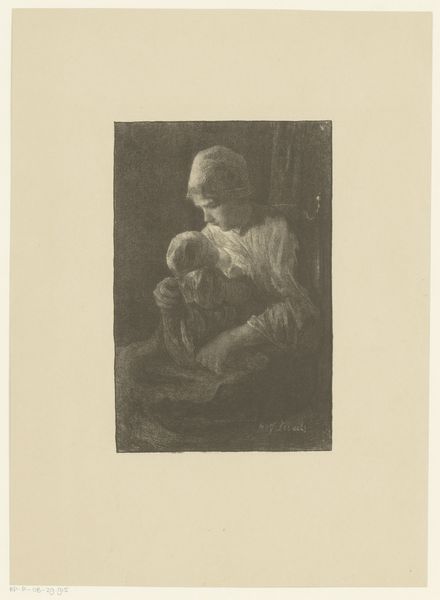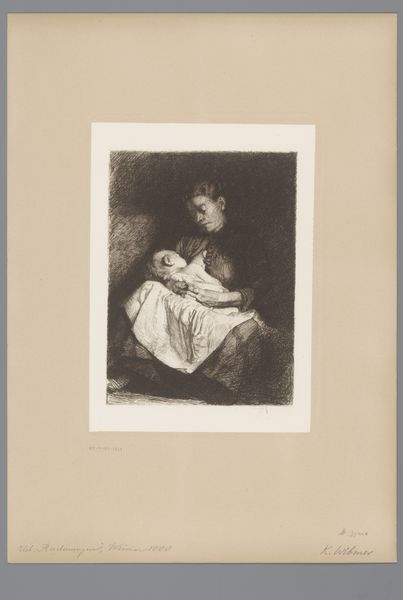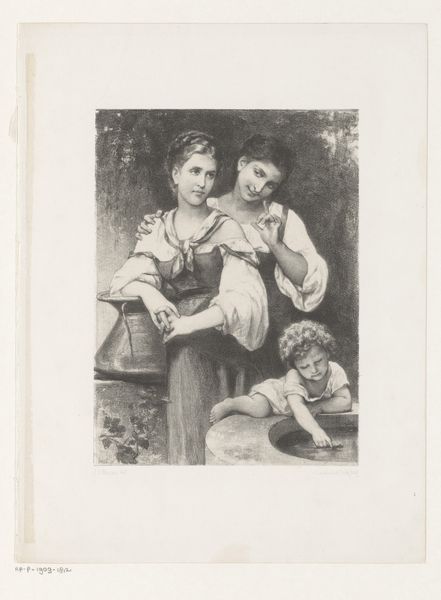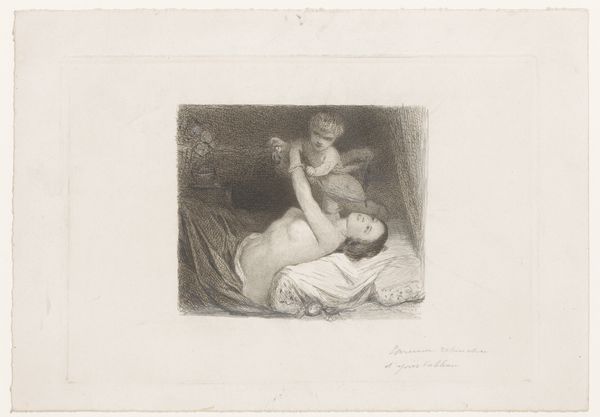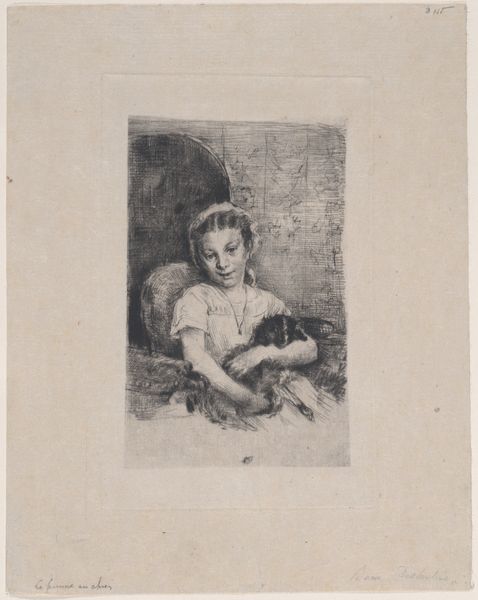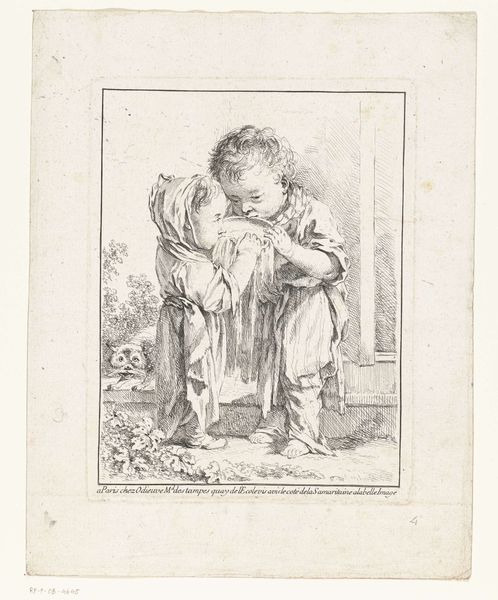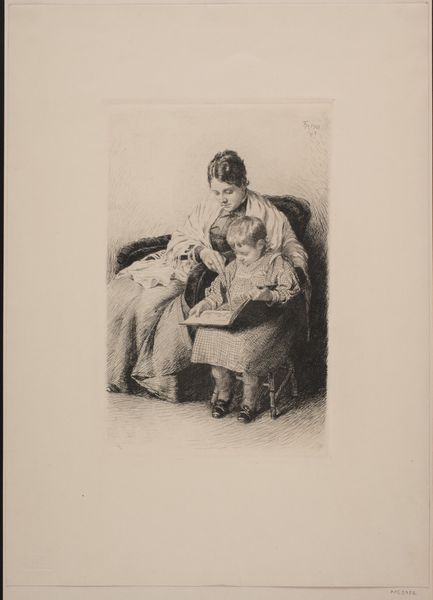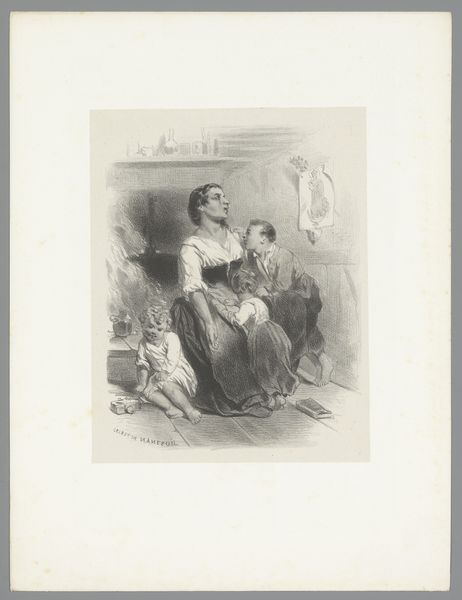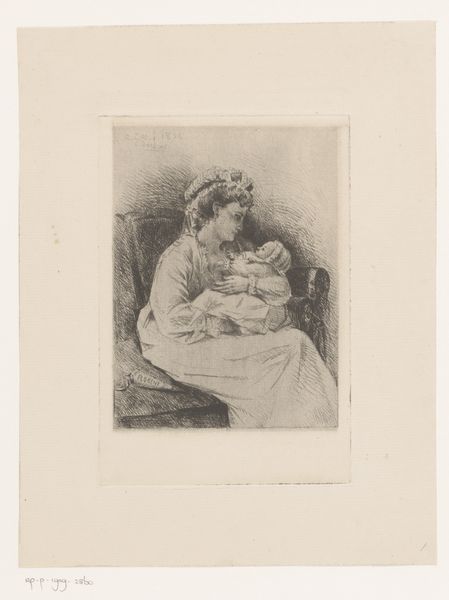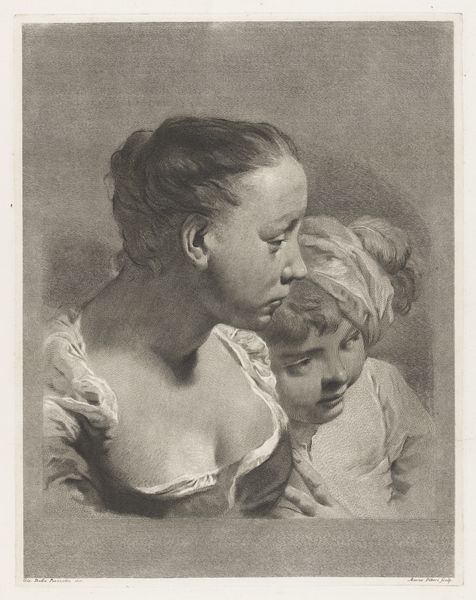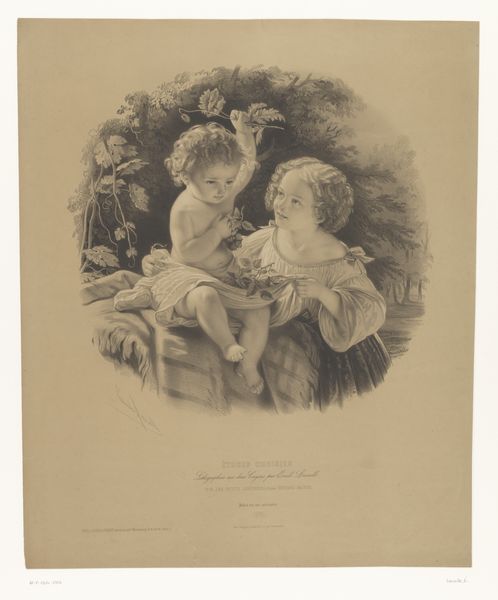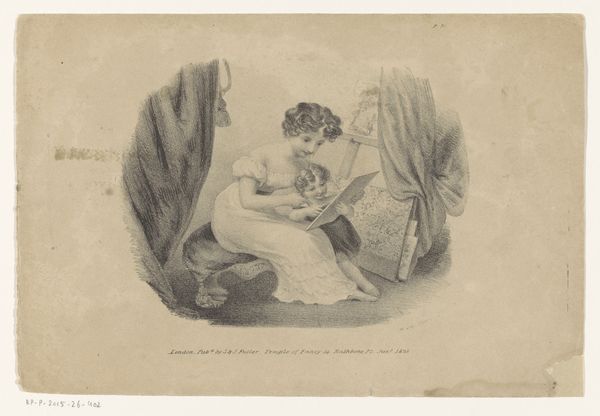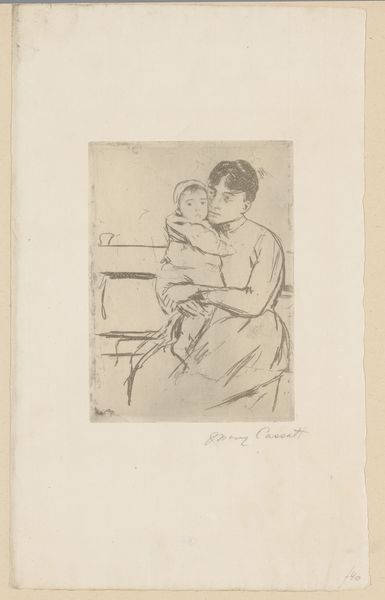
drawing, print, etching, paper
#
portrait
#
pencil drawn
#
drawing
# print
#
impressionism
#
etching
#
pencil sketch
#
paper
#
child
#
pencil drawing
#
genre-painting
Dimensions: Sheet: 14 3/16 × 10 13/16 in. (36.1 × 27.4 cm) Plate: 10 15/16 × 7 7/8 in. (27.8 × 20 cm)
Copyright: Public Domain
Editor: This is Marcellin Desboutin’s "Le Repos de bébé" from 1881, an etching on paper. It gives a sense of everyday life. The way the mother is leaning against the fence seems heavy and tired while her child, even if at rest, still plays with the little cart. What story do you think this etching is trying to tell us? Curator: Well, let’s think about 1880s France. Impressionism was challenging academic art. Desboutin often depicted modern life, particularly scenes of Parisian society. Etchings like this made art more accessible, moving it out of the salon and into the hands of the burgeoning middle class. Do you think that the accessibility changes the context of the scene portrayed? Editor: Definitely. This wasn't just for the wealthy anymore. Showing scenes of rest with the family perhaps created an inclusive viewing. And with industrialisation during this period, was Desboutin perhaps saying something more about modern fatigue of workers? Curator: Precisely! The title itself, "Baby's Rest," seems a bit ironic. Is the baby really resting, or is the mother finding her only rest in that short moment? It makes us consider how even mundane scenes are reflective of larger social and economic forces. What are your thoughts on the location in the composition? The fence feels…confining? Editor: That's a good point. The fence could represent social boundaries, or even the limited sphere allowed for women and children at that time. A space carved within an urban setting. Curator: Right. So we have this intimate family moment that also speaks to broader social structures. By understanding that tension, the work tells a bigger story about family and work. Editor: I see. It’s a simple domestic scene but speaks volumes about societal changes at the time. Thanks! Curator: Indeed. Paying attention to context transforms how we perceive even the simplest images.
Comments
No comments
Be the first to comment and join the conversation on the ultimate creative platform.
